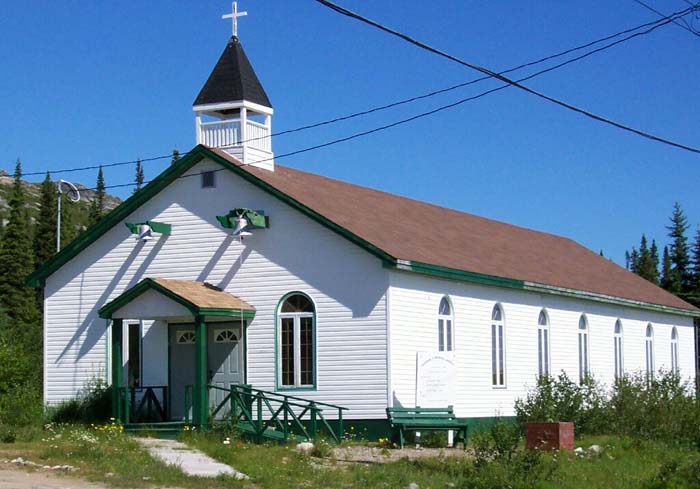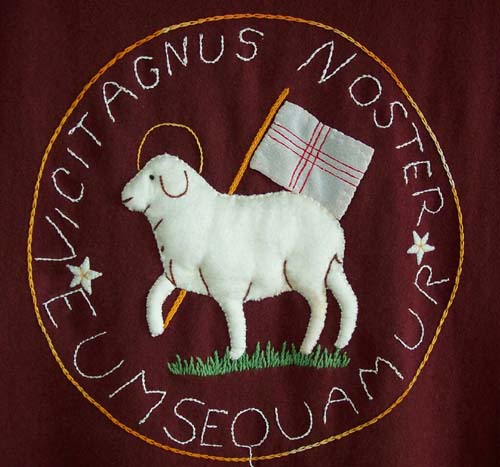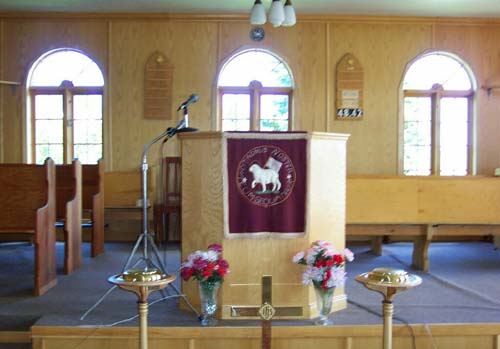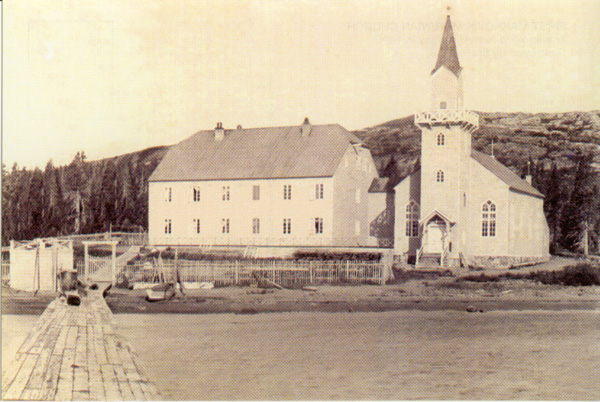

 |
 |
| Moravians came to Labrador from various parts of Europe. Bringing with them the missionary appeal of the oldest Protestant church, these followers of the Reformer John Hus (1369-1415) of Praque united at Kunwald in 1457 as one fellowship that later adopted the name Unitas Fratrum (the unity of the Brethren). On the estate of Count Nikolaus Ludwig von Zinzendorf (1700-1760) in Herrnhut, Saxony, Moravians extended the Pietist emphasis on foreign missions and even enhanced it with that special sense of witness inherent in the old Moravian church. They were intent on sharing their faith with the world. Under the leadership of Zinzendorf, missions were established in the Danish governed West Indies (1732) and Greenland (1733). It is the connection with Greenland and Johann Christian Erhardt and his assumption that Inuit in Labrador were of one ethnic family with the Greenland Inuit that inspired the first exploration of Labrador in 1752. A party of 14, including three married couples, settled permanently in Nain in 1771 and moved north and south from there to serve Inuit where they hunted, fished, and lived: in Okak 1776-1919), Hopedale (1782-), Hebron (1830-1959), Zoar (1865-1894), Ramah (1871-1908), Makkovik (1896-), Killinek (1904-1924). In the second half of the twentieth century, the superintendent moved to Happy Valley and fellowships developed in North West River and Postville. |
 This crest reads in Latin: VICIT AGNUS NOSTER EUM SEQUAMUR In English it translates to: Our Lamb has conquered. Let us follow Him. |
 This is a photo of the inside of the Moravian Church in Makkovik. |
Inuit in Greenland and Labrador gradually responded to the Christian message of salvation and the church's finely developed sense of religious celebration. For a long time, people continued to live in dispersed settlements from late spring to late fall while leading a more sedentary existence around the mission station between Advent and Easter. The relatively settled life of the winter months enabled them to participate more actively in church events and also enjoy schooling for their children. Moravians live a Bible-oriented, ecumenical faith, centered in the salvation of Christ. A church with a great sense of celebration and music, members express their faith publicly in creative liturgies, prayers, music, lovefeasts and community-building festivals on special days of the church, among them Christmas, New Year, Easter, and August 13th, the festival commemorating the renewal of the Unitas Fratrum in 1727. Inuit leadership, male and female, was made up of "chapel servants" or "helpers," who took care of the external church work and assisted the minister in the spiritual work of the congregation. In the second half of the nineteenth century, Labrador settlers joined the Moravian church and the church responded to the spiritual needs of the visiting Newfoundland schooner people. Since the 1960's, Labradorians have become ordained ministers in a church province that has a total membership of ca. 2,500 and is led today by native Labradorians. |
While Nisbet Harbour was always remembered by the Labrador missionaries as the site of the 1752 mission house, Makkovik Bay became important for Moravians in the second half of the nineteenth century. The Andersen and Thomas families who lived here joined the Moravian church in Hopedale, and Torsten Andersen was put in charge as first "Helper among the Settlers." Missionaries from Hopedale visited occasionally.
Although the Moravians had established schools taught in Inuktitut for the Inuit children beginning in 1780, the first school taught in English for settler children on Labrador's north coast was held in the winter of 1879 at Flounder Bight in the home of Torsten Andersen, with the help of Heinrich Ritter (1844-1883), a missionary from Hopedale. The next year the school moved to Hopedale, where a local couple supervised the children in a building specifically erected for this purpose.
Heinrich Ritter had suggested Flounder Bight as early as the 1883 as a possible site for a future mission house and church among the settler population in the south. The financial support of the generous British donor Mrs. Potts eventually brought these plans to fruition.
Hermann Jannasch (1849-1931), the missionary at Okak, was asked to draw up plans for the mission buildings. Flounder Bight and not Ailik was eventually chosen as mission site, a choice encouraged by Torsten Andersen and Captain William Bartlett of Turnavik and Brigus.
 The first Moravian Mission building in Makkovik, it was destroyed by fire in 1948. |
Jannasch developed the plans for the mission buildings, which cost the stately sum of £2,000. The buildings were shipped prefabricated from Niesky in Saxony to Makkovik, first on a raft up the Elbe river to Hamburg and then by a Norwegian ship, the Astraea, to Flounder Bight. Helping Hermann Jannasch erect the mission house in 1896 were Torsten Andersen and his sons; Hermann Kunik, Jannasch's nephew, who was a professional joiner; the seasoned Labrador missionary and future superintendent of the Alaska mission Adolf Stecker; August Clemens, a Moravian missionary; and two trained carpenters from the firm of Christoph & Unmack. The church was built the subsequent year, and a bell from Zoar called worshipers to service, while another bell, which had hung in the train station at Niesky, served as school bell. Church services on Christmas and other feast days were bilingual, in English and Inuktitut. Both buildings were destroyed in a fire on 27 January 1948. Today only two other older mission buildings remain: a workshop and the "White Elephant," so named because it was used for many purposes and only seldom as originally intended as a school. Starting in 1898, the Jannasch family kept a boarding school in Makkovik. |
Reverend Walter W. Perrett (1869-1950) and his family joined the Jannasch family as missionaries in Makkovik. Eventually, with the relocation of the Lenz family to Makkovik after the closure of Killinek, a more extensive boarding school became a reality in the community.
Today's church was built in 1992 and replaces the second church building, which was transported from Ailik in 1948.
We would like to thank Dr. Hans Rollmann, Professor of Religious Studies at Memorial University of Newfoundland, for the above text. This information was prepared for historical panels which are on display at the White Elephant Museum.